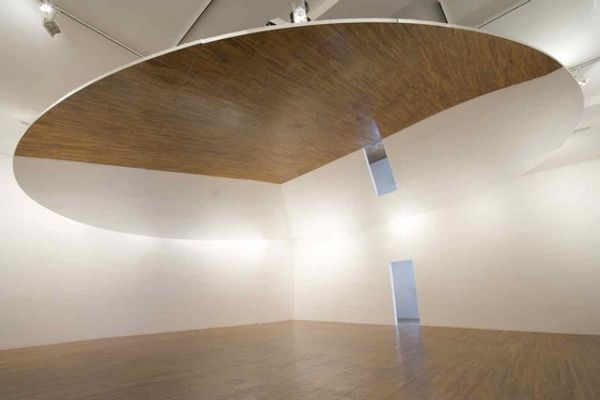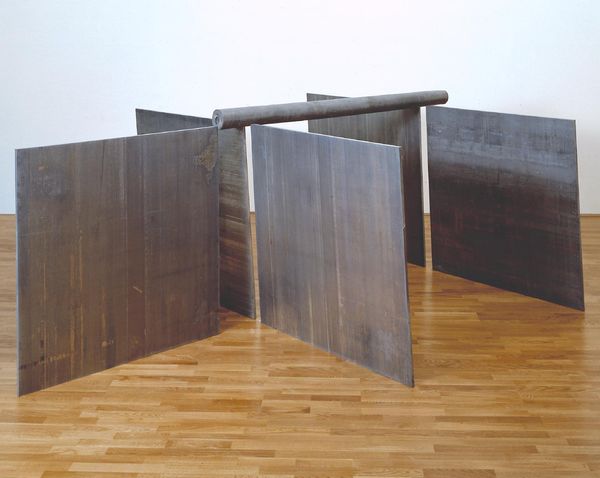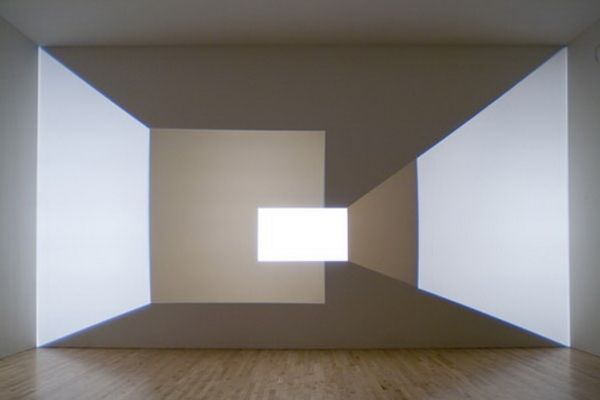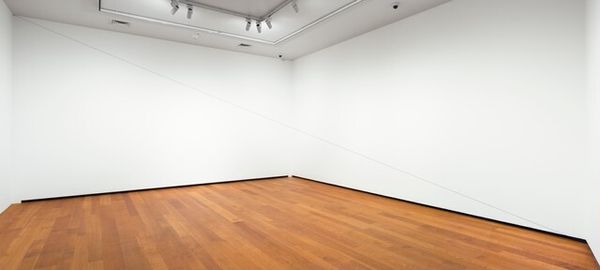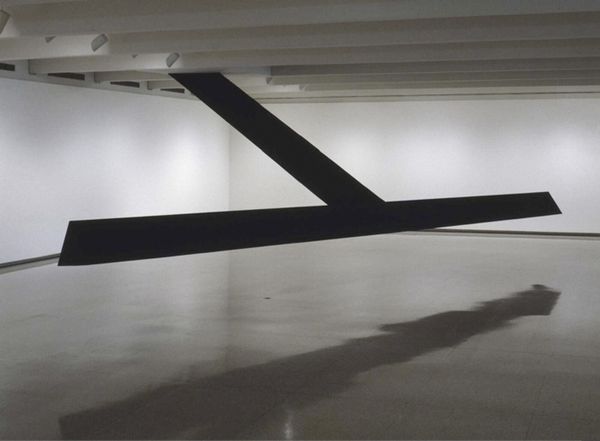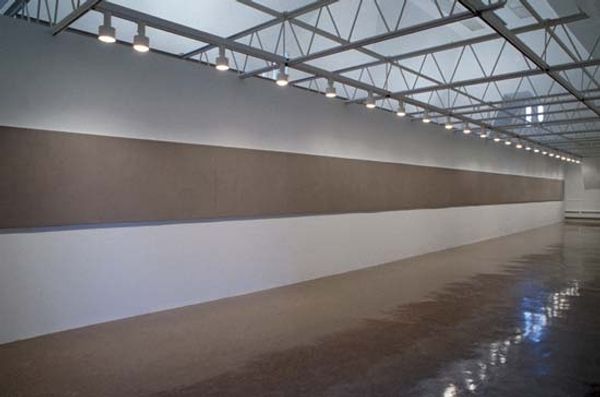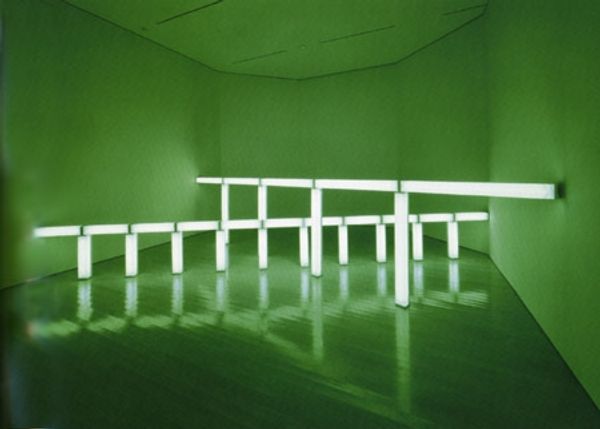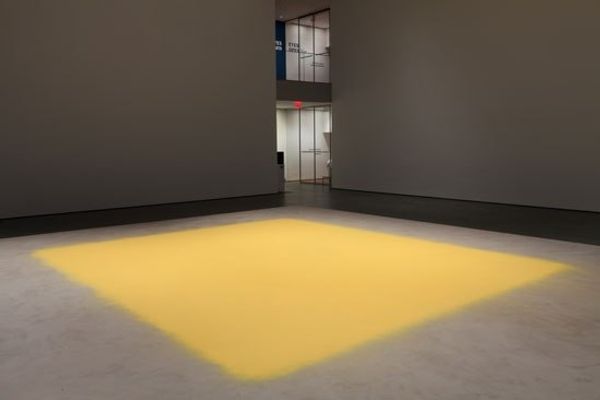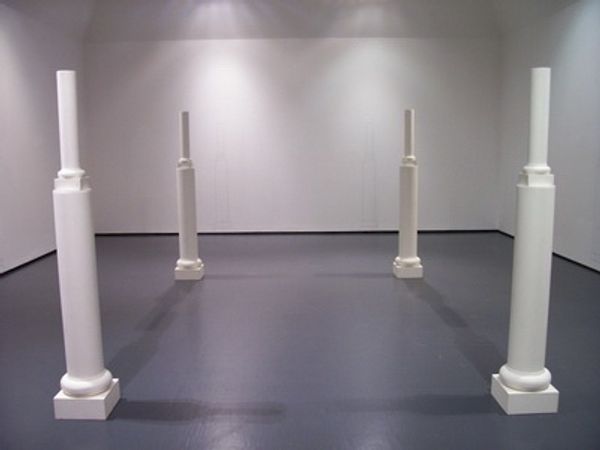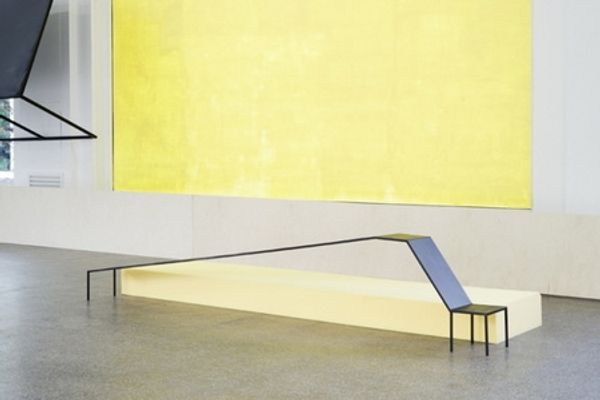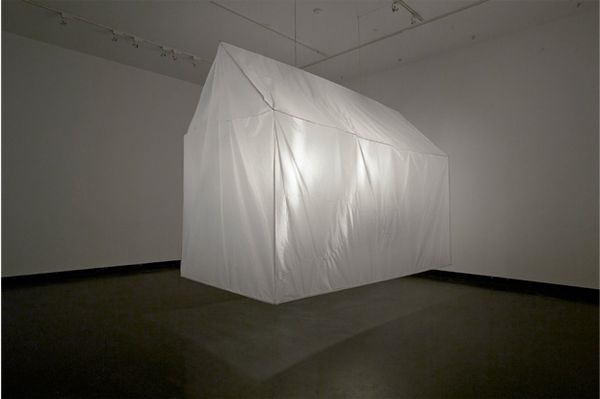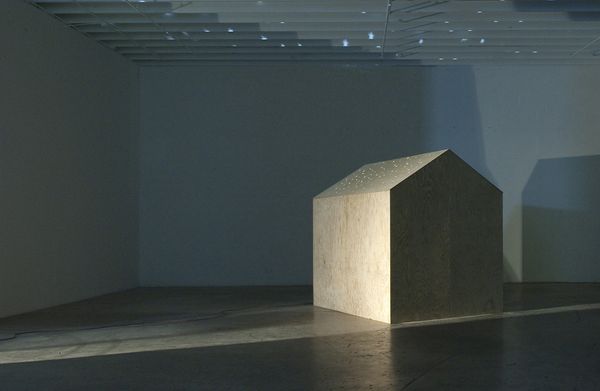
mixed-media, installation-art
#
mixed-media
#
geometric
#
installation-art
#
abstraction
#
line
Copyright: Roberto Chabet,Fair Use
Curator: Roberto Chabet's mixed-media installation, “Pier and Ocean,” from 1996, is a deceptively simple work. What are your initial impressions? Editor: A sense of disorientation, definitely. The juxtaposition of the solid blue plane and that strange wooden structure...it’s unsettling. Is it supposed to represent a pier, and if so, where's the ocean? Curator: The title hints at a tension. The 'pier' element seems to be this rising, rigid wooden form, abruptly interrupting the expanse of what is implied to be the 'ocean' represented by the blue rectangle. Editor: I’m immediately drawn to the geometry. Chabet’s reduced forms tap into an ancient visual language. Think about nautical symbols or the use of horizons and verticals to mark a sacred space. Is it trying to create one, or maybe deconstruct it? Curator: Chabet was incredibly aware of his position as an artist operating within post-colonial discourses. This work, made in the late 90s, can be viewed through a lens that critiques established, often Western-centric, artistic conventions. How might abstraction function as a way to destabilize fixed meanings or cultural narratives? Editor: Interesting, and if that is the case, the line is the key? That solid wooden 'pier' becomes a disruptive force. I notice it doesn’t quite meet perfectly. Is the line complete? Can the pier meet the ocean? I’m pondering what this fragmented relationship evokes in the Filipino context, thinking of the social or cultural ruptures and the challenge of creating harmony. Curator: I see that parallel. The intentional incompleteness could symbolize interrupted progress, failed connections between social structures or systems of power, or a longing for a horizon that remains elusive. Editor: So the choice of raw materials is important, a deliberate move to challenge artistic norms and reflect a cultural identity in flux. It adds a layer of meaning by going against more conventional symbols of maritime power or permanence. Curator: Precisely. It avoids grand narratives, allowing space for interpretation rooted in socio-political awareness. I think it speaks to the resilience inherent in adapting, in constantly reimagining connections across what feels like an unbridgeable gap. Editor: Looking at it this way has changed how I view it, I no longer see just simple materials and abstract forms, but as a powerful statement on cultural displacement and reinvention. Curator: I find that perspective insightful; it allows for a richer understanding that honors not only the artwork, but the complexities of historical and cultural narratives too.
Comments
No comments
Be the first to comment and join the conversation on the ultimate creative platform.

